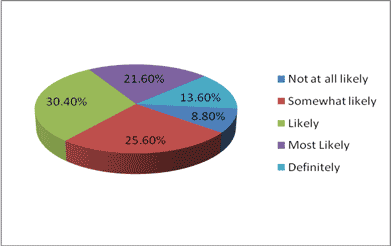The way software is distributed is going through a major change. The suppliers and distributors who do not adapt will soon find themselves losing market share at a rapid pace that will only become greater overtime.
In the past, there were about 40 to 50 software distributors that made up over 80% of the industry’s total revenue. The major software companies that supplied these distributors used a “box on a shelf” method to sell their products. A shopper would visit a store to purchase a software application for a one-time fee. Since technology evolves faster than anything else in society, the software a consumer bought would often be outdated within 18 months or even sooner. For instance, if you purchased a software program for tax preparation, by the next tax season, that software would likely be outdated. You would then have to buy a completely new program or pay high fees to the supplier for upgrades.
Over the last several years though cloud computing has started changing the landscape of the software industry and this seems to be a trend that is only getting stronger. Cloud computing is a broad term that refers to technology being delivered as a service over the Internet. Consumers don’t actually install the applications on their own computers. Instead, the software is hosted elsewhere, accessed through a web browser and is typically rented under a subscription model. The consumer pays as they go instead of a one time upfront cost associated with buying software off the shelf and can stop using the application at anytime.
Furthermore, the consumer does not need to purchase new software every year to stay current or pay for expensive upgrades. The cloud is constantly upgraded to keep pace with the ever changing world of technology. “The top 40 application vendors have leveraged their distribution power to control over half of the software market revenue. Our customers see a huge opportunity to break from last century’s hegemony in software with the democratization of how software gets distributed. Now is the time for the other 99.5% of the world’s ISVs (independent software vendors) to redefine how software gets to customers,” said Carl Theobald, CEO of Avangate which is an ecommerce solution provider.
In 2010 IBM surveyed their users asking them to rate the potential for cloud computing to overtake on-premise computing as the primary way organizations acquire IT by 2015. The below graph are the results of the survey;
R “Ray” Wang, Principal Analyst and CEO, Constellation Research, Inc., said, “The software market is about to be massively disrupted as never before. In previous waves of change, “Big Software” has controlled the pace of change with their dominance of channels and distribution. This time, the rapid adoption of cloud computing puts the power in the hands of any software vendor, large or small.
To summarize, the large software suppliers need to evolve into the world of cloud computing and align themselves with re-sellers who are of the same mindset. The re-sellers need to familiarize themselves with the new cloud technology as quickly as possible so they can effectively distribute the cloud solutions to a world of consumers who are eager to break the traditional “box on a shelf” model.
